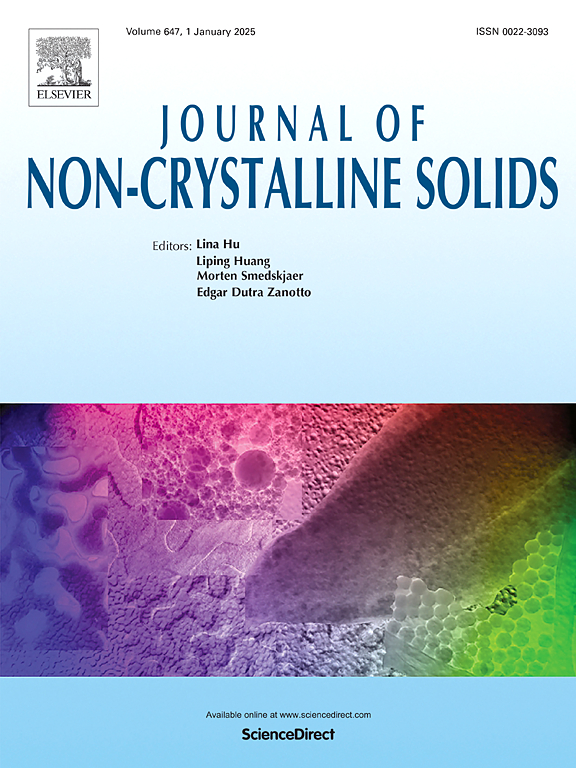Tailoring glass forming ability and coercivity in iron-based nanocrystalline alloys through machine learning-driven feature interpretation
IF 3.5
3区 材料科学
Q1 MATERIALS SCIENCE, CERAMICS
引用次数: 0
Abstract
Nanocrystalline soft magnetic materials developed from precursors with high glass forming ability (GFA), combined with their low coercivity (Hc), are beneficial for advanced electronic devices. Herein, machine learning (ML) models with 519 original data and 22 features were developed for predicting GFA and Hc. Four-step feature screening was utilized to obtain important features predicting GFA, and top four features (e.g., VEC, VEC1, cB, and ΔT) remained. Among three distinct ML algorithms, the XGBoost outperforms SVM and RF, achieving an AUC of 0.93. The accuracy of the classification model is up to 96.7 %. The SHAP analysis revealed that when the valance electron concentration (VEC) was below 7.29, the VEC excluding Fe, Ni, and Co elements (VEC1) was above 0.71, boron content (cB) among 6.85 ∼ 11.54 at.%, and the crystallization temperature intervals (ΔT) above 121 °C, the precursors easily obtain fully amorphous structures. Three optimized alloys were designed by XGBoost and NSGA-II algorithm, exhibiting good GFA and low Hc of 1.34 ∼ 1.40 A/m. The errors between ML-predicted and experimental Hc values were lower values compared to those previously reported alloys, underscoring the reliability and robustness of the developed ML algorithm.
通过机器学习驱动的特征解释剪裁铁基纳米晶合金的玻璃形成能力和矫顽力
利用具有高玻璃形成能力(GFA)的前驱体开发出纳米晶软磁材料,并结合其低矫顽力(Hc),有利于先进电子器件的开发。本文建立了具有519个原始数据和22个特征的机器学习(ML)模型,用于预测GFA和Hc。利用四步特征筛选获得预测GFA的重要特征,保留前4个特征(如VEC、VEC1、cB和ΔT)。在三种不同的ML算法中,XGBoost优于SVM和RF,实现了0.93的AUC。该分类模型的准确率高达96.7%。SHAP分析表明,当价电子浓度(VEC)低于7.29时,除去Fe、Ni和Co元素的VEC (VEC1)在0.71以上,硼含量(cB)在6.85 ~ 11.54 at之间。%,结晶温度区间(ΔT)高于121℃时,前驱体容易获得完全非晶结构。采用XGBoost和NSGA-II算法设计了3种优化合金,具有良好的GFA和低Hc (1.34 ~ 1.40 A/m)。与先前报道的合金相比,机器学习预测和实验Hc值之间的误差更小,强调了所开发的机器学习算法的可靠性和鲁棒性。
本文章由计算机程序翻译,如有差异,请以英文原文为准。
求助全文
约1分钟内获得全文
求助全文
来源期刊

Journal of Non-crystalline Solids
工程技术-材料科学:硅酸盐
CiteScore
6.50
自引率
11.40%
发文量
576
审稿时长
35 days
期刊介绍:
The Journal of Non-Crystalline Solids publishes review articles, research papers, and Letters to the Editor on amorphous and glassy materials, including inorganic, organic, polymeric, hybrid and metallic systems. Papers on partially glassy materials, such as glass-ceramics and glass-matrix composites, and papers involving the liquid state are also included in so far as the properties of the liquid are relevant for the formation of the solid.
In all cases the papers must demonstrate both novelty and importance to the field, by way of significant advances in understanding or application of non-crystalline solids; in the case of Letters, a compelling case must also be made for expedited handling.
 求助内容:
求助内容: 应助结果提醒方式:
应助结果提醒方式:


